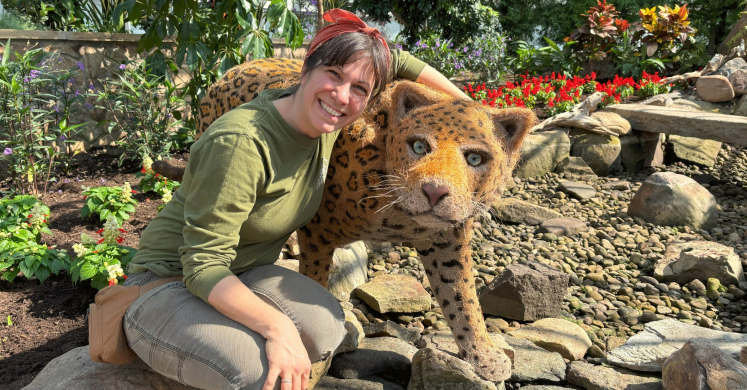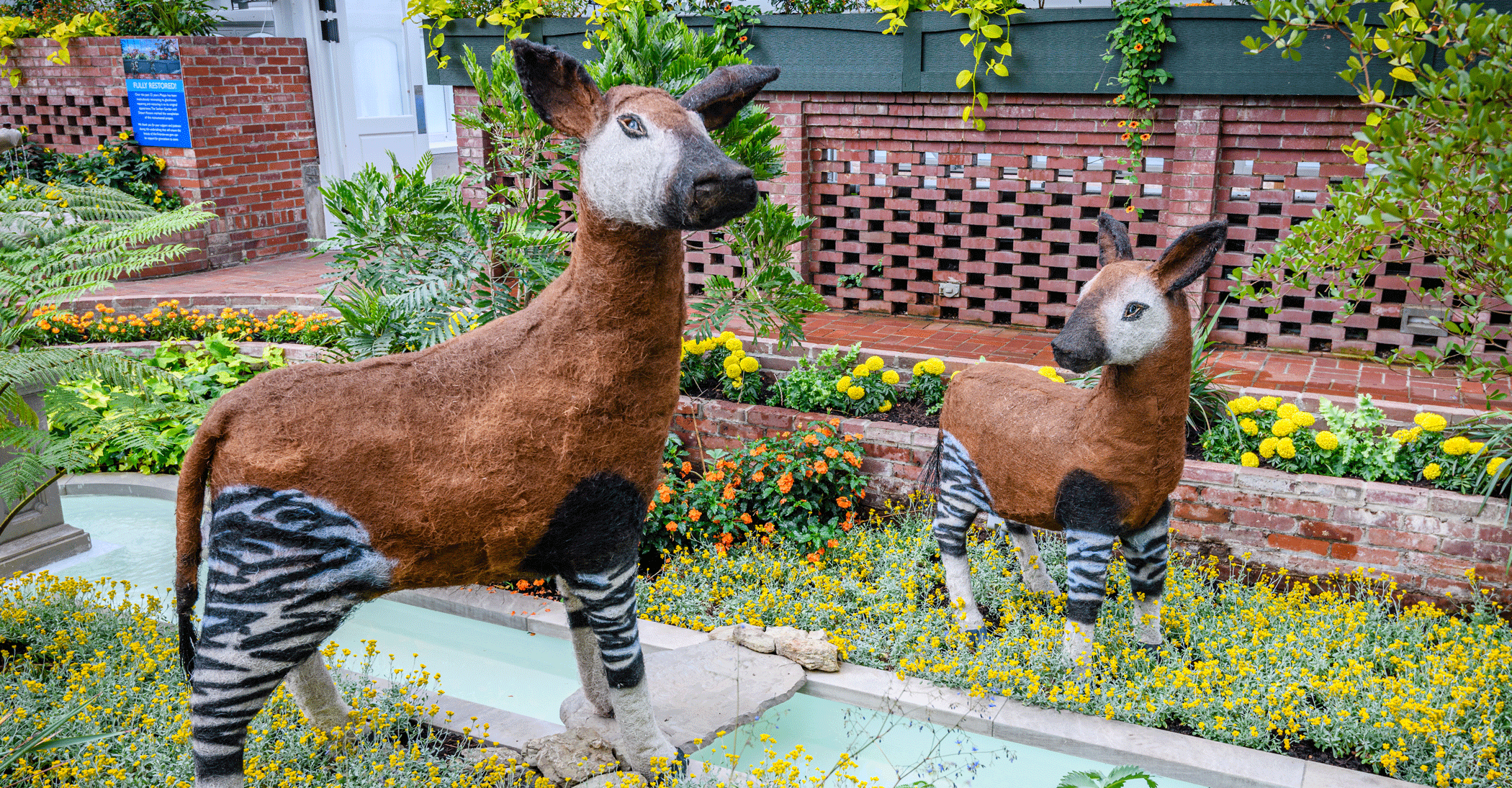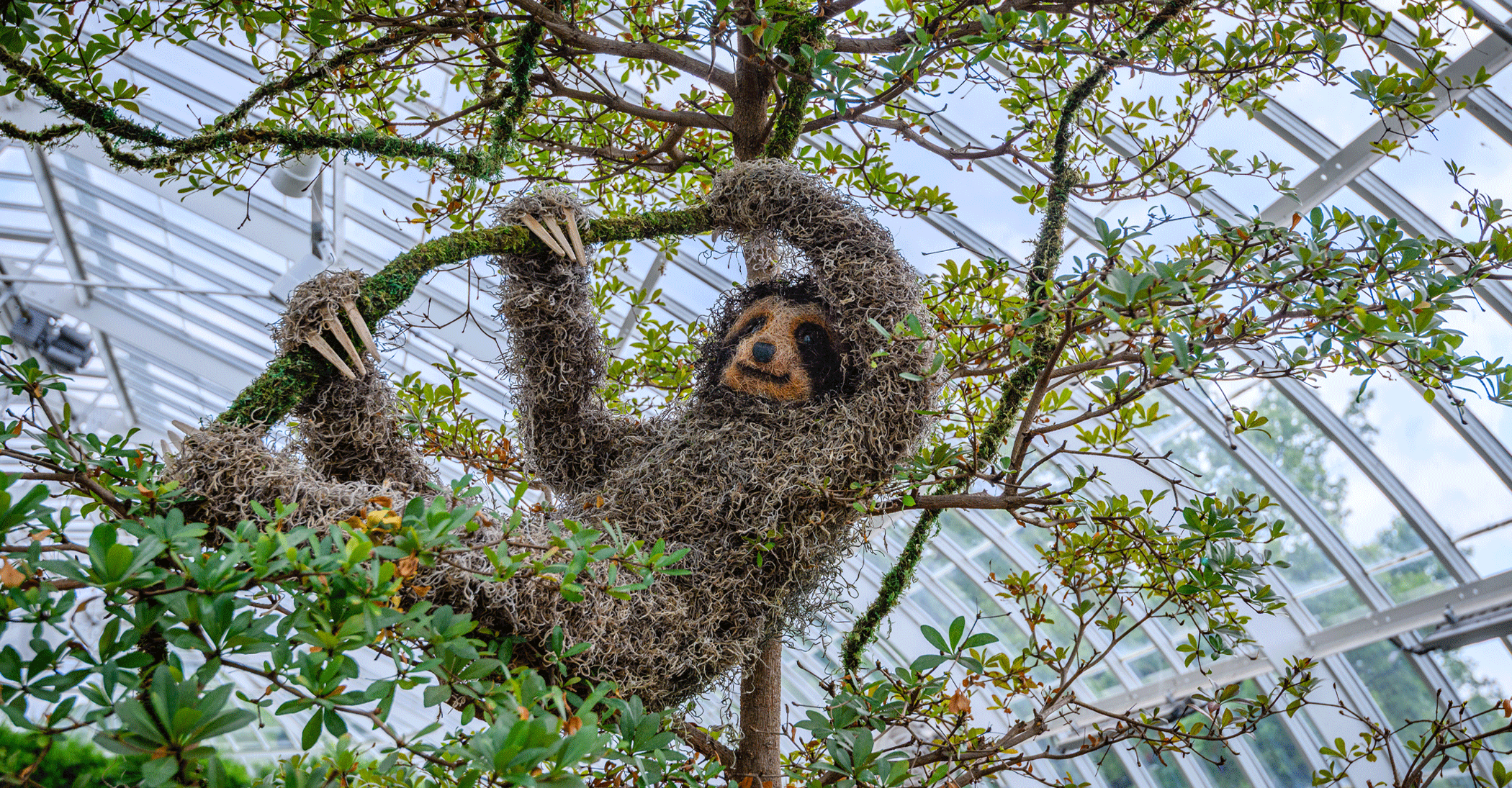Blog

Topiary Quest!
Summer flower Show: Jungle Quest is packed with charming animal topiaries such as Elephants, life-sized parrots and a giant python, just to name a few. Visitors to the Conservatory love to look at animals, but we thought you might like to learn about the design process and how Phipps staff make these stunning display pieces. Lauren Seiple, Horticulture Exhibit Associate, offers insight into how topiary is designed, constructed and installed.
The design process starts with collecting photos of the animals that will be featured in the show. The team studies the animal, planning the pose, size and look of the topiary. While they want the animal to look realistic, the team must also consider many factors. The scale of the animal topiary can pose some real challenges. They must consider details such as how the topiary will look and photograph once placed in the display. Lauren adds, “Additionally, from a purely practical standpoint, whatever we make in our studio has to get through the doors! Phipps Conservatory was built in 1893 and many of our display rooms have doors only a few feet wide, which means sometimes we must slim down larger animals.”

In order to create their topiaries, the horticulture staff assesses which existing props that they might reuse/modify existing structures or if they need to build the frame from scratch. Yet, both options start with wire frames which are either planted with live plant materials or dried plant materials. If the topiary requires a bespoke build, the team looks for items from the Conservatory to reuse or recycle. Many of the frames are fabricated from old wire hanging baskets or parts of older, decommissioned topiaries. The team also gets creative using purchased topiary forms in unexpected ways. For example, the Okapi in Sunken Garden were created using wire frames that were meant to be deer. As with the sloth in the East Room, it was originally meant to be a monkey. The designers removed the tail and added the expressive face to create the charming sloth. The team constructs the wire frames, covers them in poultry netting, then finish them off with dried plant material also collected from the Conservatory. Finally, they add all the finishing details, including the eyes and the face, to bring the topiary to life and give it a distinct personality.

Design and construction are a collaborative process, with many of our Phipps teams working together to create the final display. The exhibits team works on design and fabrication, the facilities team builds props and create interactive features and the horticulture team does the planting. A good example of this collaboration is the giant African python in Sunken Garden. The facilities team created the faux log, the exhibits team created the frame and the horticulture team planted the python with succulents.

The stunning jaguar in the East Room is Lauren’s favorite topiary in Jungle Quest. The team built the frame from scratch collaborating with Russ Tompkins in facilities who custom welded the legs for the piece. This allowed them to give the jaguar a real sense of movement. Lauren says, “the result is that the jaguar looks like it started to cross a stream but froze in its tracks because it saw you walk into the room.” It was a bonus that she got to use an airbrush for the first time to paint the spots on the big cat. It may surprise you to learn that Lauren has no formal art or sculpture background and she actually started her career in floral design. She learned to build different structures to hold flowers and plants which translated well into her topiary work at Phipps. She really appreciates the freedom to learn new fabrication skills and the opportunity to be creative at work.
Lauren enjoys the entire process of creating topiaries from the collaborative process to trying new techniques and materials while building the props. She says, “the most rewarding part is when I’ve finished a project, it’s turned out how I imagined it and I know it’s going to be a hit!”

